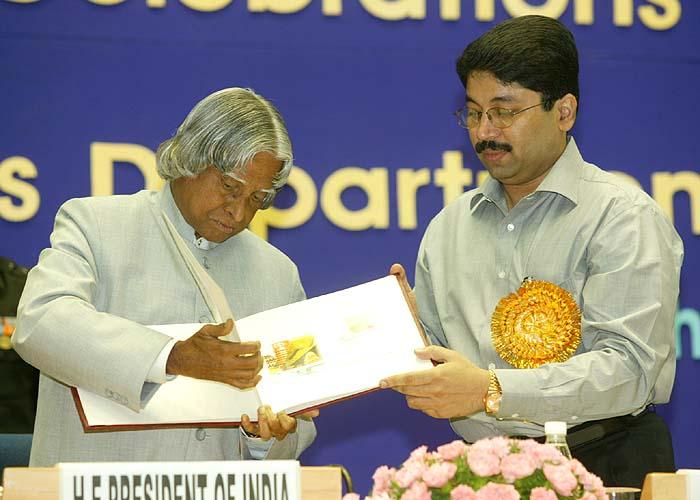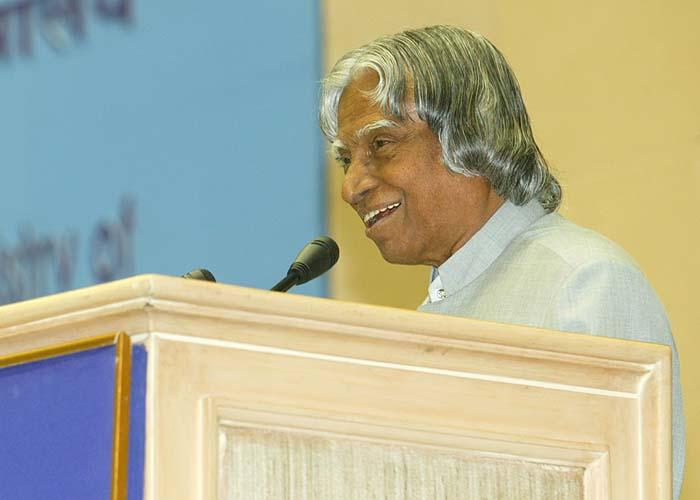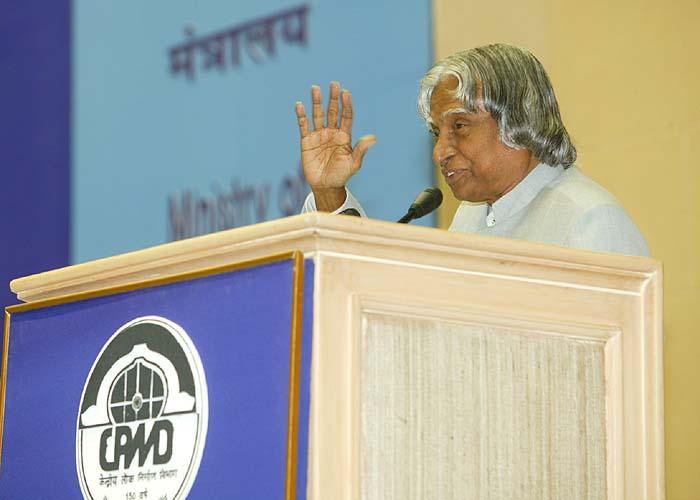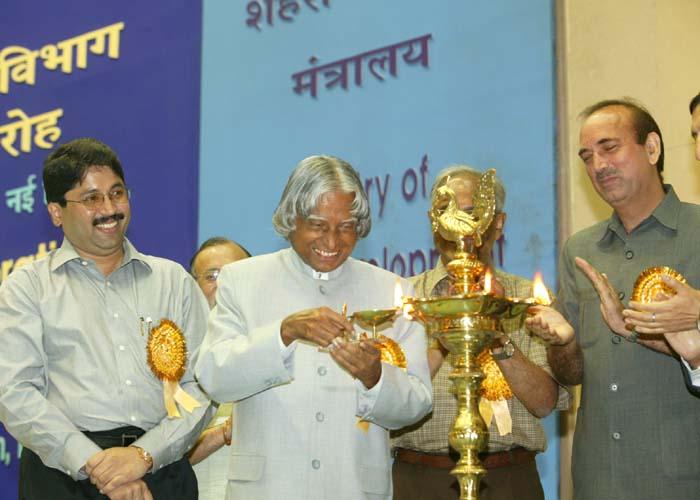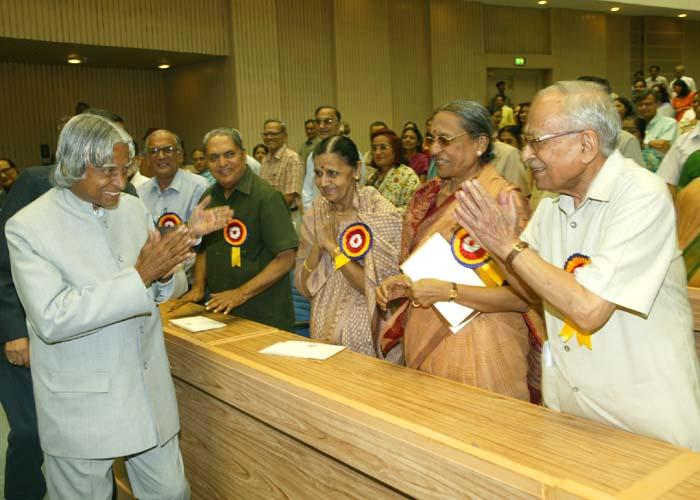Address At The Function To Celebrate The Completion Of 150 Years Of Central Public Works Department (Cpwd), New Delhi
New Delhi : 19-07-2004
CPWD's Performance and the Vision
I am delighted to participate in the function to celebrate the completion of 150 years of the Central Public Works Department. My greetings to all the 43000 members consisting of the designers, engineers, architects, contractors, technical and administrative personnel of the department on this occasion.
School buildings and Safety
When I am in your midst, first of all I would like to share with you my concern regarding certain issues, which we need to address immediately. As you are aware, recently there was a serious fire accident in a privately owned school at Kumbakonam resulting into the death of a number of young innocent children. I am extremely pained to hear about this accident. Let me send my condolences to aggrieved parents for their loss of little loved ones. I am aware of the fact that the rules and regulations concerning this are not lacking in this country, but a compliance with these regulations and monitoring mechanism is the need of the hour. It is also necessary to look at the provisions for fast evacuation of children in case of a calamity. We must ensure the availability of water storage filled with water for operating the fire fighting equipment without undue delay in the close proximity of all school buildings. Normally, fire tenders are supposed to carry self-contained water tanks. Proper monitoring mechanism and timely action would prevent this type of human loss.
I am bringing this point before the CPWD team who would have built hundreds of schools, which they may now like to review for the adequacy of the safety provisions to making the buildings immune from fire accidents and other hazards. Now I would like to narrate my experience in Hyderabad, which I visited last week.
My Experience with Green Buildings
Recently, I was invited to study and inaugurate the CII-Sohrabji Godrej Green Business Centre at Hyderabad. It is a huge multipurpose complex, which has been awarded platinum rating, the highest under the Leadership in Energy and Environment Design (LEED) rating system in the world. This is the third building to be awarded platinum rating and the first building outside the United States. I had visited and seen around the green building. What a beautiful natural green environment that I witnessed. Wherever I went, there was day light coming in, an automatically controlled light, water and cooling system is in place through the natural energy saving design of the green building. I had witnessed the rooftop designed in a successively sloping fashion to conserve the heat energy as well as to generate solar power with solar panels for the Green building. Reusing the building materials and prefabricated bricks are the unique features. I was told that it enables 30% to 40% reduction in annual operational cost of the buildings; but approximately 25% increase in the building cost for the Green building. Even though the Green building concept is at a nascent stage in India, CII is assisting seven corporates in constructing green buildings. The overall potential for green building materials and equipment is expected to be about Rs. 22,000 crores by 2010. Few green materials and equipments are already available in the country.
With the growth of Green buildings in India annual reduction in energy consumption of these buildings compared to conventional buildings is expected to be in financial terms a saving of Rs. 200 Crore by 2010. Majority of water used in Green buildings is recycled. The fresh water consumption in green buildings is about 30% lower than conventional buildings. In addition Green buildings can lead to higher employee productivity, higher utilization of recycled materials, higher focus on landscapes and cleaner/greener environment.
Similarly, solar cooking, solar heating and windmills are also finding application in large, medium and small buildings as an energy saving mechanism. These energy saving, pollution free, water conserving, cost effective features are necessary to be incorporated in all our Government buildings - technical and administrative, housing complexes, community centers, schools, educational institutions and hostels.
Building standards for earthquake conditions
On 26th January 2001 there was a severe earthquake in Gujarat. After the occurrence of the earthquake it was reported that the casualties were high because most of the people were inside the buildings. In a similar situation, when the earthquake was reported in California, it was said that the casualties were low because people were inside the building. It is essential to realize that creating and adhering to the building standards for earth quake will make sure that buildings constructed will provide shelters to the people and do not become creators of causality. As you all know Delhi and surrounding area are Zone 4 earthquake region. Particularly, let me suggest to CPWD team that it is essential to have a proven earthquake-building code in position soon. All future buildings built by CPWD, must undergo earth quake resistant study prior to construction. A group consisting of Department of Science and Technology Earthquake team, Bureau of Indian Standards and Central Building Research Institute and other research institutions can work together to evolve earthquake proof building design codes within the next six months.
Newer design perspectives
Let us now address energy conservation issues pertaining to buildings and related services. Energy is required while constructing the buildings and subsequently for their maintenance in the form of providing lighting, maintaining a desired particular temperature, provision of essential services such as water, drainage system, heating, cooking etc. The building design has to take into account both these aspects so that construction cost of the building can be low and also the recurring cost for getting the different services by the occupant is also low.
Energy consumption: Targets
It is reported that the total annual energy consumption in Indian Buildings as follows:
Commercial sector:
21.6 billion kwh (32% for A/C, 60% for lighting, 8% others)
Residential sector:
36 billion kwh (35% light, 29 % fan, 7% cooler, 14% Refrigeration, 4% A/C, 11% others)
One of our experts say, ?for a normal building, the present energy consumption is 300 kwh per meter square annually which can be brought down to 140 kwh per meter square annually by proper design /details /philosophy, where as in Germany with its strict energy codes it is reported that the consumption is only 50 kwh per meter square annually. Green Business Centre that I visiting last week has the target of 50kwh energy per square meter. It is all the more important for India to achieve at least a target of less than 100 kwh per meter square annually within the next 5 years and then gradually reduce. This will need coordinated effort between architects, builders and the energy engineers, a newly developed expertise.
CPWD may like to consider carrying out research and generation of energy efficient building codes. The architects and building planners have to play a very important role in the design of the building with these features. The seeds of this perspective have to be sown in the schools of architecture and town planning and Engineering colleges. Energy conservation should start right from the location of the site, the direction of buildings, windows, doors, glare etc., the aim should be to use maximum advantage of the sun and wind, while minimizing the wasteful heat load from sun into the buildings and roofs.
CPWD?s Contribution
I am aware that the CPWD has built a number of buildings during the last 150 years and is presently maintaining over 1,80,000 dwelling units and nearly 150-lakh square meter of office space. The Rashtrapati Bhavan has been built during the period 1918 ? 1930. It has been maintained very well by the CPWD during the last 74 years. In this important year it will be appropriate to conduct a study on the buildings and roads, which had been constructed during the last 25 years. The study should focus on the identification of typical data and problems: such as steel, cement and other materials used for per square meter, energy used per square meter, repairs arising due to frequent modifications of electrical, water, drainage, communication, gas and other services to the buildings, frequency of repair in plumbing region and toilet services water leakage and seepage during the monsoon season. The study should also bring out how the buildings were able to withstand major fire, earthquake, storm and flood, which had occurred in the different regions in the country. This will be the CPWDs knowledge database of 25 years and it will give the guidance for the future design.
The knowledge of such data and problems should be discussed in a technical conference by engineers, technologists, designers, and architects from the department, scientific laboratories and academic institutions and above all with the users. This database will lead to the evolution of newer designs for buildings, re-engineering of the organization for efficient delivery of services, developing innovative empowerment and management methodologies for creating cost effective assets to the nation. There is a need to standardize the norm for the building constructed by CPWD. This will enable use of prefabricated modules in the construction. This in turn will ensure higher level of quality assurance, reduced work in the field and fast construction of the building on site. This will also provide large-scale employment for unemployed youth for fabricating modular structure.
Ten missions for CPWD
The focus of Central Public Works Department during the next two decades could be in evolving and implementing the following suggested missions:
1. Building design, which uses maximum solar energy and reduces the energy consumption per square meter by half compared to the present practice.
2. Water harvesting, water recycling and water management scheme in all buildings to reduce the fresh water consumption by at least 50% within five years.
3. Buildings in Zone IV of the earthquake prone area conforming to a cost effective and adoptable standard for earthquake prone building including protection mechanism and appliances to avoid fire hazards. In this connection, design of buildings in earthquake regions of Tokyo, California, Kutch, Uttaranchal and Latur could be one of the inputs.
4. Constructed buildings are to be water-proof free for at least ten years without any maintenance, this should be taken as a challenge.
5. Requirement of all services such as civil, electrical, water, drainage, gas, and communication are planned and integrated in the conceptual stage itself, thereby needing no rework after building construction.
6. All buildings to be made friendly for disabled persons through special provisions.
7. Maximum use to be made of green building materials such as recycled fly-ash bricks, and equipment and green building concepts.
8. Department to seek ISO certification and also promote engagement of contractors who are ISO certified for enriching the quality of future buildings through Total Quality Management.
9. Conduct a yearly seminar in partnership with industry, educational institutions, scientific institutions and users for deriving state-of-the-art knowledge for incorporation in future assets and cost effective modernization of existing assets.
10. CPWD may evolve a management structure for its vast organization across the country through the implementation of networked e-governance solutions to promote higher level of transparency in multiple transactions.
Conclusion
Very rarely, in any country 150 years of cumulative experience in design, architecture and building construction for housing has been recorded by a single organization. CPWD will be the only organization that would have built buildings and roads in green field sites in valleys, in deserts, in plains, in mountains, in seacoasts and in islands. I suggest this experience could be brought out as a comprehensive book in planning, design, architecture, engineering, maintenance, service, problems and challenges faced. Best performance comes out from an organization, when the people are inspired by the vision and historical success of the organization. To promote motivation, it is essential to celebrate the successful people irrespective of their age and position. My greetings to the members of CPWD during their 150th year celebrations. I wish the Central Public Works Department all success in their missions.
May God Bless You.

